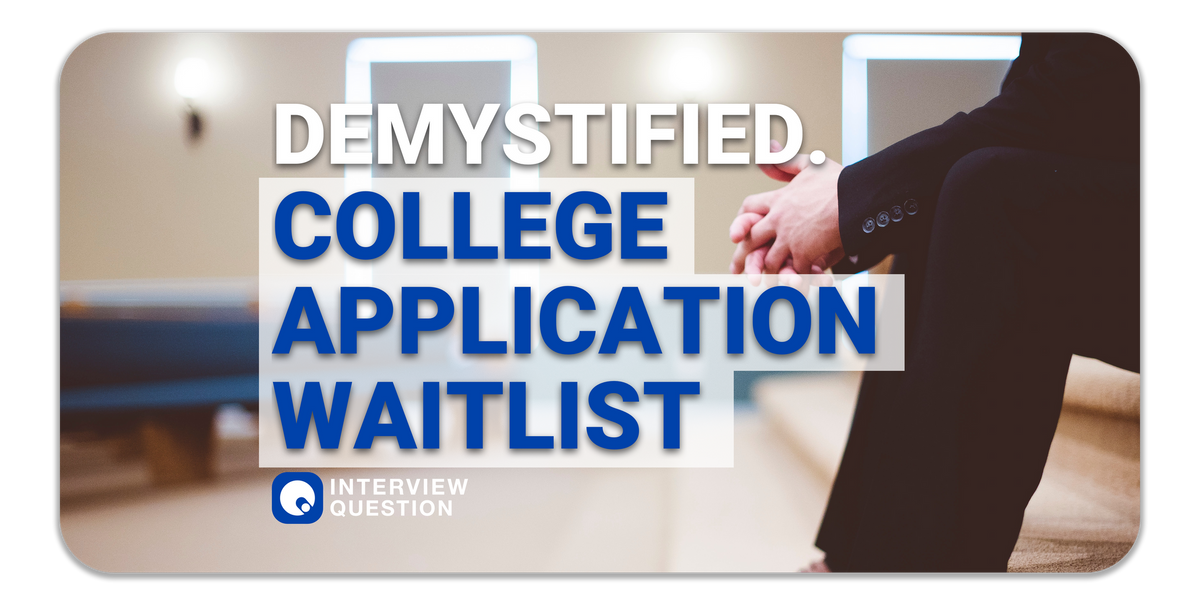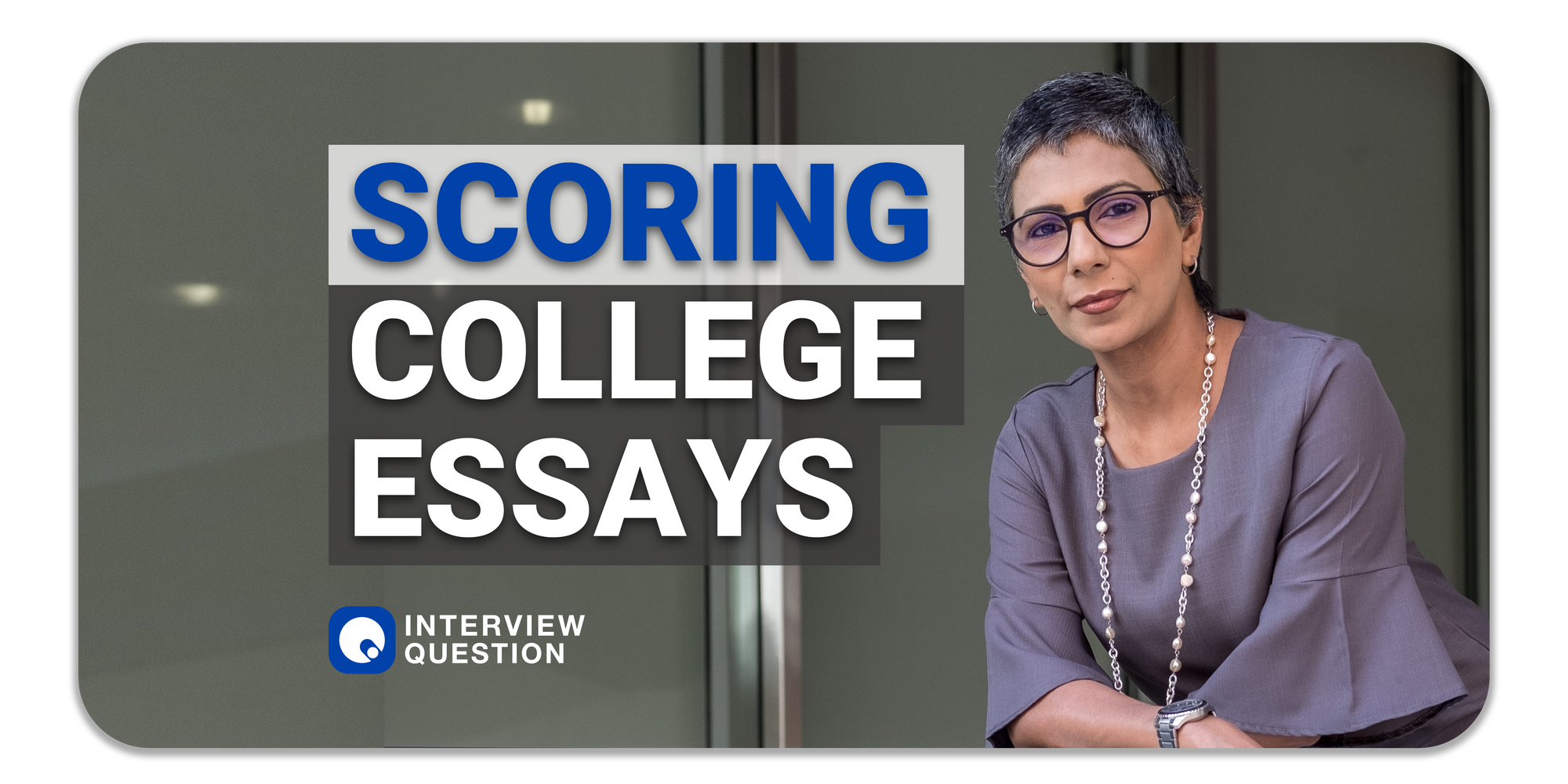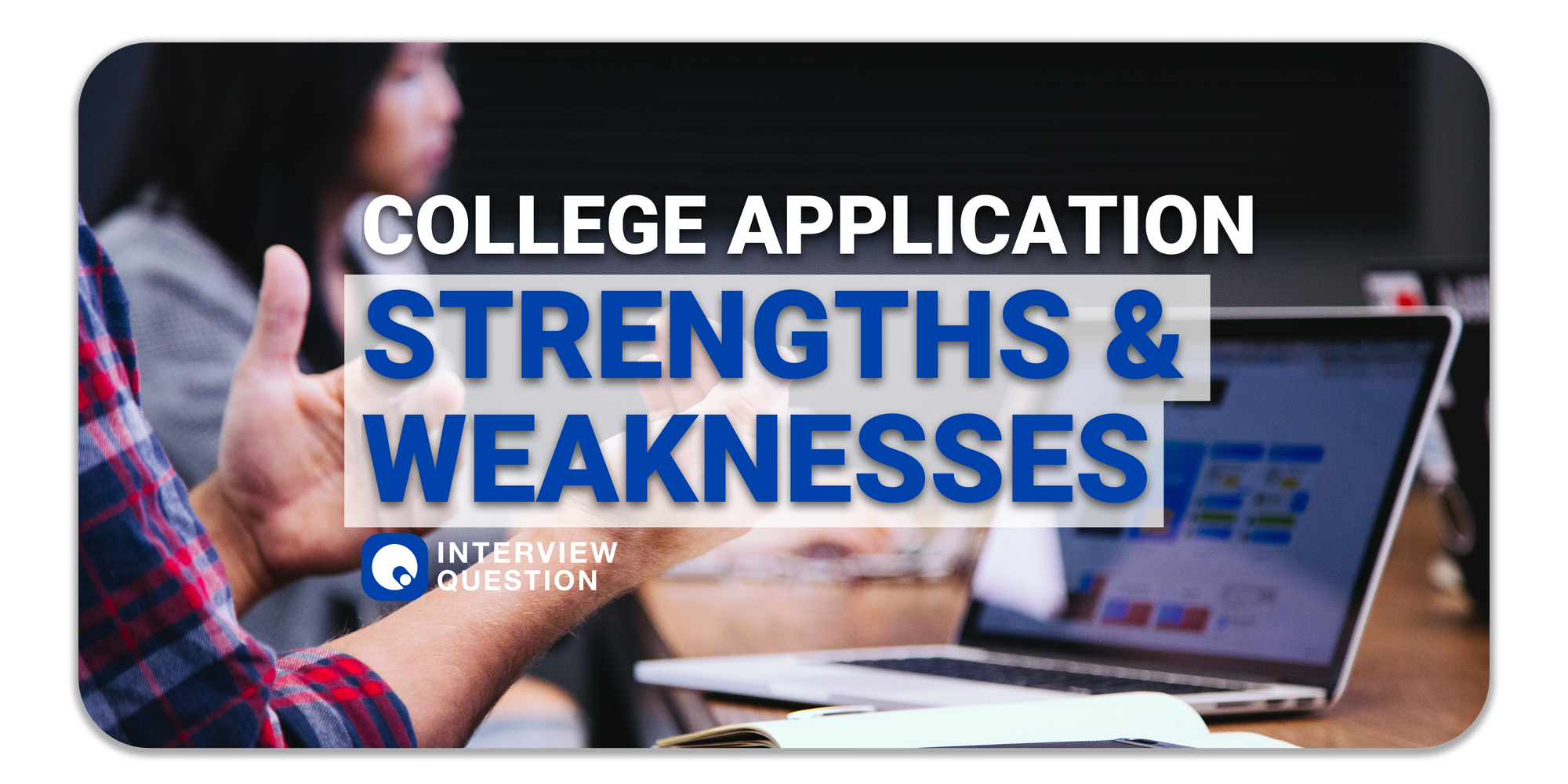College Waitlist Demystified: Chances & Acceptance Rates
• Limbo Period & Wait Times • Getting Out of a Long Waitlist • Actual Intake Numbers & Statistics • Early, Regular vs Waitlist Decisions • Secrecy & Waitlist Updates

Waitlisted applicants to highly selective colleges often face an agonizing dilemma: accept the lesser offer or wait in suspense for the place in their dream school? Though waitlisted students are promised the chance of an offer, colleges remain very strict about which students will be offered admission.
What Does it Mean to Be Waitlisted
Waitlisted students are those who applied to a college or university for the upcoming fall term. Colleges use a waitlist to offer more admission slots than they have available. If a college or university offers you a place on the waiting list, you're considered on the track to receive an offer of admission if a spot becomes available.
Some applicants are waitlisted because of their unusual credentials. Others may have significant academic shortcomings that would make them ineligible for admission without a waiver.
Acceptance Rate: How Many Students Are Offered Admission
The chances of being offered admission into a highly selective college vary from one school to the other. Harvard University, for example, has an acceptance rate of 8%, while it is at 38% at Princeton and 7% at Yale. On the other hand, some of the top colleges offer very few openings to their applicants. According to data by the National Association for College Admission Counseling (NACAC), Duke University received fewer than 25 applications from high school seniors last year.
You can determine your chances better if you can estimate how well you did in the earlier parts of the admission process - like: Did your essay score well?

Waiting Period While On the Waiting List
Most colleges keep students on their waiting lists for many months or even up to a year. The median wait time for admission to these schools is 15 months. The longest waitlist is at Harvard, where students are waiting for up to three years after submitting their applications. Students can be offered an interview, which is known as a supplemental admission decision, but the offer of admission does not depend on this step. According to data by NACAC, only 5% of waitlisted applicants to selective colleges receive a supplemental decision.
Should You Wait, and for How Long?
Most colleges promise to look at the requests of waitlisted students over the summer before making a decision on them. Of course, there are no guarantees of acceptance, but it is worth a shot. A NACAC study shows that approximately 43% of students who were on waitlists in 2004 were accepted later. And when it comes to highly selective colleges, the chances go up considerably. For instance, almost 72% of applicants from selective colleges who were placed on the waitlist during that time period secured an offer and joined the student body.
Must the College Inform Me If I am Rejected?
Being in waitlist limbo can be nerve-wracking for you as an applicant. But if you are on the waiting list across from the university that you have your heart set on, it's probably best to stay cool, relax and wait for the news.
The bad news here is that most colleges and universities refrain from informing applicants about their waitlist status - so you will likely remain in suspense as the chances of new information or status updates is slim.
The good news on the other hand is that, although waitlists are becoming a regular part of higher education, most colleges do not give up the option of informing applicants about the finality of their waitlist status. This means the final, last or concluding decision regarding your waitlist status will be informed to you at the end of it all. There will be news eventually. Be on the lookout for an email or phone call from a college, and look forward to them informing you that they have moved you from inactive to progress on their waiting list.
Can You Apply for Another School While on a Waitlist?
Being on a college waitlist is a waiting game, so it is important to keep your options open. It is possible and perfectly normal to apply for other colleges while you are still on the waitlist of your top-choice school. There is nothing stopping you from seeking out other opportunities. There is also no penalty and applying at other colleges does not decrease your chances of being accepted at your waitlisted college. And if you are offered admission somewhere else, you can also accept and decline the college that puts you on the waiting list.
Factors Affecting Number of Students on the Waitlist
There are many factors that affect the number of students who are waitlisted. The college chooses its applicants based on certain criteria that indicate their likelihood of being admitted to the school. Their criteria may include ranking, credentials, standardized test scores, grades, extracurricular activities, and other factors that contribute to student's academic success. The type of college and the amount of competition for admission can also play a role in their considerations when making a decision on the number of waiting students.
Your strengths and weaknesses play a major role in how high you rank in the waitlist. Strong candidates who know their weaknesses and are either working to get them fixed or doing something constructive about it will stand the best chance of ranking at the top.

For name-brand colleges, a short waitlist length and high rejection rate signal to the public an undue sense of prestige and selectivity in their admissions process. In some cases, the school may choose to accept less applications, in order to boost their status in the eyes of the public.
Estimate Number of Students on the Waitlist
According to Mark Kantrowitz, the publisher of FastWeb, Brown University has about 200 students waitlisted each year. However, Duke University and Princeton University have about 400 applicants waitlisted every year. So in general, an estimated 150 students are placed on the waitlist at Duke and Princeton while 250 students are placed there every year at Brown College.
Waitlist queues are usually quite short because these students are already the next best candidates available and having too many students on the waitlist might mean that the school cannot accommodate all of them.
Secrecy & Enquiring About Waitlist Status
Most selective colleges have a strict policy against giving out any information regarding the number of applicants on their waitlists or the names of students who have been offered admission from there. By design, this information is meant to be shrouded in secrecy. The college's attitude is that waitlists are fluid lists, and they do not have any way of knowing what will happen when students accept their offers or whether there will even be an offer to accept.
Will I be Notified if I am Shifted Up on the Waitlist?
In most cases, colleges are not very forthcoming about the status of waitlist applicants. Most colleges consider it normal to maintain a confidential status in all this information related to the waitlist. To uncover and keep track of the waitlist activity, log in to your college's website to find out if you've been offered admission or moved off the waiting list.
Providing Additional Information to the College
While on the waitlist, you may think that sending the school more information about yourself would help you be considered more favorably. However, most waitlisted students do not receive any response to their inquiries. And since the school wants to remain as mysterious as possible about the number of applicants on each waitlist, it may not be possible to get more information.
How to Get Out of a Waitlist
To have a better chance at being accepted to a selective college, talk to your counselor or personal essay coaches, who can help you develop a carefully crafted application and improve the chances of acceptance.
Preparing a strong application (in hindsight) will most likely help you get out of the waitlist. You can also contact the admissions office directly. It is possible that you can get out of a waitlist if you visit the school in person, request an interview and introduce yourself, then submit a letter of recommendation or volunteer.
These methods are not guaranteed to secure a place, but nevertheless, help make your application more visible to the selection committee.
Factors Affecting Acceptance Rate
The factors affecting acceptance rates vary from college to college, but there are some common factors in most selective colleges. Students applying to selective colleges often have to compete with a continued inflow of highly qualified applicants.
Actual Intake Numbers by Colleges
During the 2006–2007 academic year, Harvard University received 110,211 applications and accepted 16.6% of them. Princeton University received 63,369 applicants and accepted 1.7% of them. Yale University however received fewer applicants than Harvard or Princeton and admitted only 20.9% of them (as compared to 29%). Duke University on the other hand received 62,237 applicants and admitted only 4.2% of them (as compared to 14%).
In 2020, the number of students accepted into highly selective colleges was expected to increase by almost 3%. However, this did not happen as anticipated at Princeton University and Harvard University. An estimated 740 students attended Brown College in 2020 (as compared to an average of 700 students every year for the past 4 or 5 years).
Accepting a Lesser Offer as a Backup
It is usually best for applicants to accept any college placement in order to ensure that they have a spot to attend college in the first place. However, if an applicant is not offered a place in his desired college and he is willing to gamble on getting it next year, then taking up a lesser-ranked offer is a great idea.
Taking a Gap Year
Many students are hesitant to take a gap year after being waitlisted. But if the admissions office has asked them to defer their admission offer, then taking a year off is surely better than accepting the place and returning to college a year later. Life doesn't stop when you miss getting your coveted slot in a choice school, whether it is a year. During that time, a student can keep his options open while pursuing his passion (outside school, classes and academia) and improve his resume for better career opportunities in the future. Going for community college is also another option.
Why Students are Placed on the Waitlist
As of 2011, Brown University was the most selective college in the US with an acceptance rate of 5.1%. They also offer a generous financial aid package to their students. These factors suggest that they have been able to build a rigorous admissions process to weed out students they do not deem qualified enough. However, Duke University was listed as the best value for money among top colleges by Kiplinger, Inc, and Princeton University was ranked as best overall value by Princeton Review.
Early Decision Plan
Some colleges have an 'early decision' plan for highly selective colleges. This means that students will be accepted automatically if they apply early. Most high-ranking colleges have a waiting list policy, which means they do not automatically accept every student who applies for admission unless their quota is filled up. Therefore, students who wish to be offered an acceptance are recommended to apply early and waitlist if necessary.
Notification of Being Waitlisted
Updates will likely be sent to you via email and a letter should also be posted to you in due course. If you are waitlisted, you can write to the college by mail or email to find out about your status. You may also wish to contact the admissions office by phone.
Rejection from Waitlist
Students must be accepted to one college before they are informed they have been rejected from a waitlist. If they do not secure an offer from their waiting school, this means that they have been rejected and will not be taken off the waitlist. Your college application will entirely be out of the selection process if the college has not gotten back to you about your application for admission by April 1 (U.S, U.K. Colleges).
Waitlist Decisions
When you receive a decisions letter while being on a waitlist, this means you have reached the front of the waitlist queue. You are now offered a place in college and the waitlist decisions is a process that formally offers you the seat in the college. The college has already decided that a student is qualified enough for consideration, and their quota of students for the year allows the acceptane of the additional student.
What Does it Mean to be Offered Admission from Waitlist?
The college may offer an unconditional offer of seat or waitlisted status will be revoked at any time once the college enrolls students from its waiting list. The offer to be placed on the waiting list could be withdrawn by the college if you are not responsive to the college or if you do not reply back to their communication.
What You Should Do Once You Are Offered Admission from Waitlist
You should respond back to the admission office right away with an email, letter or phone call that clearly indicates your intentions. If you accept, then let them know when you can arrive on campus. If you decline, then please provide them reasons for your decision.
Early Decisions Vs Regular Decisions Vs Waitlist Decisions
The difference between the early decision and regular decision is that early decisions are usually created in March, and the early decision offers are usually offered by the colleges before April 1. Waitlist decisions are ranked behind those from regular decisions, and students who are in waitlists are considered last - after the early and regular crowd.
Suspended Decisions
Suspended decisions mean that the college has not filled their quota of students for your school, or they have filled all the seats in your school's freshman class and you have not yet been accepted or rejected. If you are on a waitlist with a suspended decision on it, it means you will remain first on the waitlist until the college has enough students to accept them.
Must I Accept a Waitlist Offer?
It is up to you to accept or reject the offer from the waitlist. Waitlist offers are non-binding, which means that you have the ultimate choice. Ysually you have until May 1 (or July 1, in the U.K.) to accept or reject, and make the final call.
Should I Accept a Waitlist Offer?
It will depend on a number of factors such as if you attend an elite school if you are willing to pay the application fee, and if you are interested in coming back for the next year or not. If you desire to attend an elite college but do not meet the requirements, then it could be worth it to take advantage of this waitlist offer. Plus, if you do not accept your position on the waitlist, this does not necessarily mean you will not be accepted into that school in the future.
Non Refundable Deposits
Some colleges practice collecting a deposit for students who would like to be on, or remain on, the waitlist. This is a nonrefundable deposit and will only be refunded to those students who are offered admission. If the student is rejected, they can choose to remain on the waitlist, but they will not get their deposit back. Whereas if the student is offered a place, accepts and goes through admissions, then the deposit will be credited into the tuition fee as a form of prepayment.

